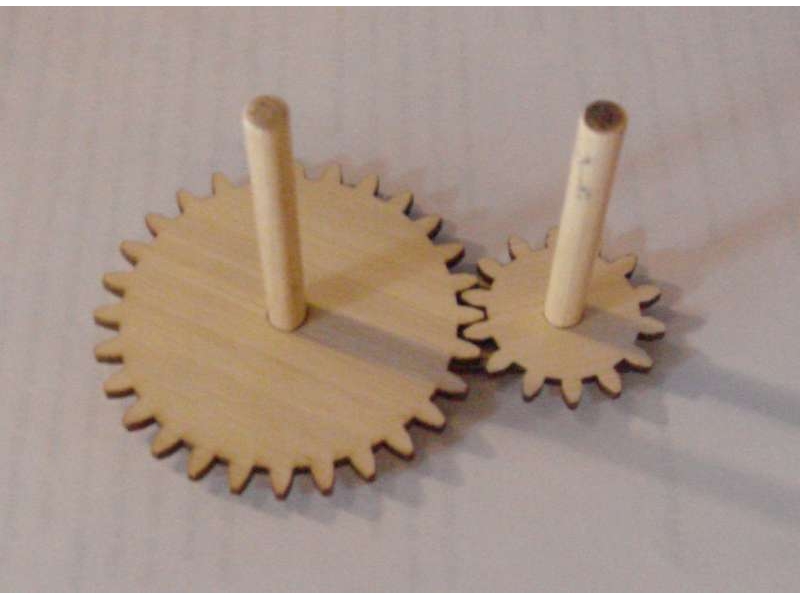First, look over the anatomy of the spur gear pair in this figure and the vocab below.
Number of Teeth (N)
Pitch Diameter (D): The circle on which two gears effectively mesh, about halfway through the tooth. The pitch diameters of two gears will be tangent when the centers are spaced correctly.
Diametral Pitch (P): The number of teeth per inch of the circumference of the pitch diameter. Think of it as the density of teeth — the higher the number, the smaller and more closely spaced the teeth on a gear. Common diametral pitches for hobby-size projects are 24, 32, and 48. The diametral pitch of all meshing gears must be the same.
Circular Pitch (p) = pi / P: The length of the arc between the center of one tooth and the center of a tooth next to it. This is just pi (π = 3.14) divided by the diametral pitch (P). Although rarely used to identify off-the-shelf gears, you may need this parameter when modeling gears in 2D and 3D software like we’re doing here. As with diametral pitch, the circular pitch of all meshing gears must be the same.
Outside Diameter (Do): The biggest circle that touches the edges of the gear teeth. You can measure this using a caliper like Sparkfun.com’s # TOL-00067. Note: Gears with an even number of teeth are easiest to measure, since each tooth has another tooth directly across the gear. On a gear with an odd number of teeth, if you draw a line from the center of one tooth straight through the center across the gear, the line will fall between two teeth. So, just be careful using outside diameter in your calculations if you estimated it from a gear with an odd number of teeth.
Center Distance (C): Half the pitch diameter of the first gear plus half the pitch diameter of the second gear will equal the correct center distance. This spacing is critical for creating smooth-running gears.
Pressure Angle: The angle between the line of action (how the contact point between gear teeth travels as they rotate) and the line tangent to the pitch circle. Standard pressure angles are, for some reason, 14.5° and 20°. A pressure angle of 20° is better for small gears (and gears with few teeth), but it doesn’t make much difference. It’s not important to understand this parameter, just to know that the pressure angle of all meshing gears must be the same.



